Following part of the Lincoln Heritage Trail, we drive two hours to Abraham Lincoln’s third home in Indiana. The Lincoln Boyhood National Memorial marks the location where Abraham Lincoln grew to manhood. Located in Lincoln City, Indiana, this site preserves farm site where the Lincoln family lived from 1816 to 1830. It is an inspiring location, fit for an inspiring president.
Memorial Building
The Memorial Building feels the most tomb-like in design much like the Egyptian relief sculptures found on the tomb of pharaohs. This 1944 one-story limestone ashlar structure features five bas-relief panels portraying different phases of Lincoln’s life. Inside the building, a theater plays a 16-minute film about Lincoln’s life in Indiana. Next to the theater, a small museum highlights several exhibits and artifacts related to Lincoln’s life. At the far ends of the building sits a quiet chapel, and at the opposite end, a meeting hall houses a fine portrait of the president’s mother, Nancy Hanks Lincoln.
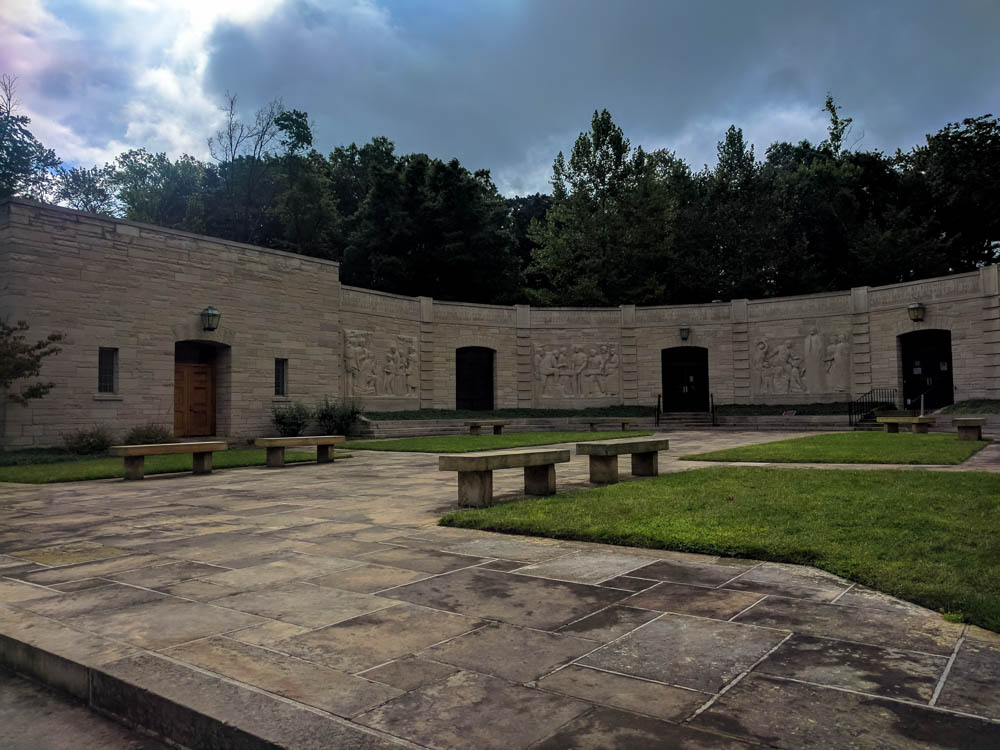
Lincoln Boyhood Memorial Building
Abraham Lincoln Portraits
Of the treasures within, I found the private gallery the most impressive. The Lincoln-related artwork includes copious amounts of portraits and lithographs of Lincoln and his family. Artists created many of the paintings and reproductions decades later and based on photographs or other paintings when Lincoln was still alive. In image after image, I find the visage of Abraham the man gaunt and almost tired looking. The photos of Lincoln from the mid-1840s to around 1860 – his pre-beard years – show him to be a very skinny tall man with large ears.
One story I found endearing is about an 11-year-old girl named Grace Bedell wrote to Lincoln: “Let your whiskers grow… you would look a great deal better for your face is so thin. All the ladies like whiskers and they would tease their husbands to vote for you and then you would be President.” and the president-elect responded, “As to the whiskers have never worn any do you not think people would call it a silly affection if I were to begin it now?” According to historians, Lincoln announced to his barber William Florville, “Billy, let’s give them a chance to grow.” And at the start of his inaugural journey, he had a full beard.
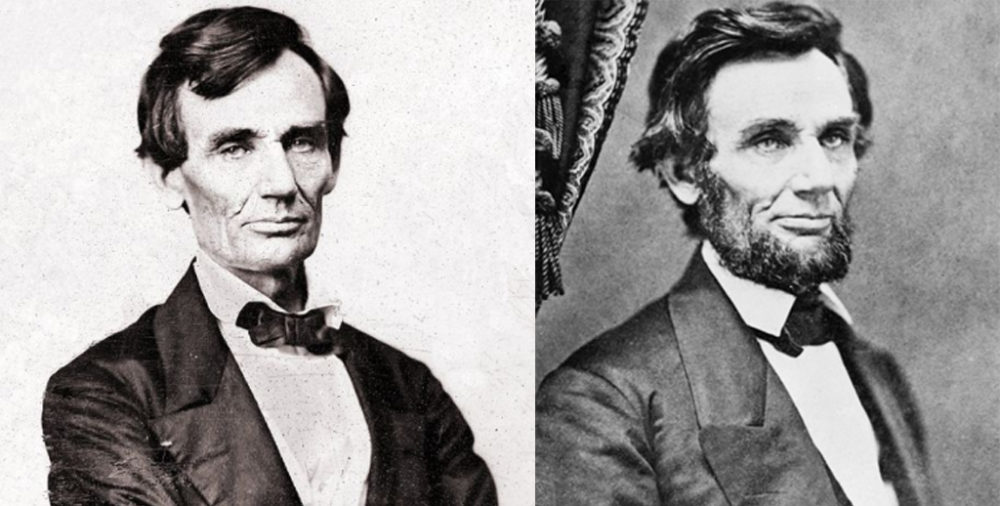
Abraham Lincoln Before and After the Beard
Pioneer Cemetary
Just past the Memorial Courtyard and behind the flagpole, is the cemetery where the family buried Nancy Hanks Lincoln, who died of milk sickness in 1818. When historians discovered the site in 1879, they quickly erected a headstone at Nancy’s grave site. Unrelated, but worth a mentioning, Peter Evans Studebaker of the South Bend, Indiana Studebaker Brothers Manufacturing Company also lies within a modest plot at Pioneer Cemetary.
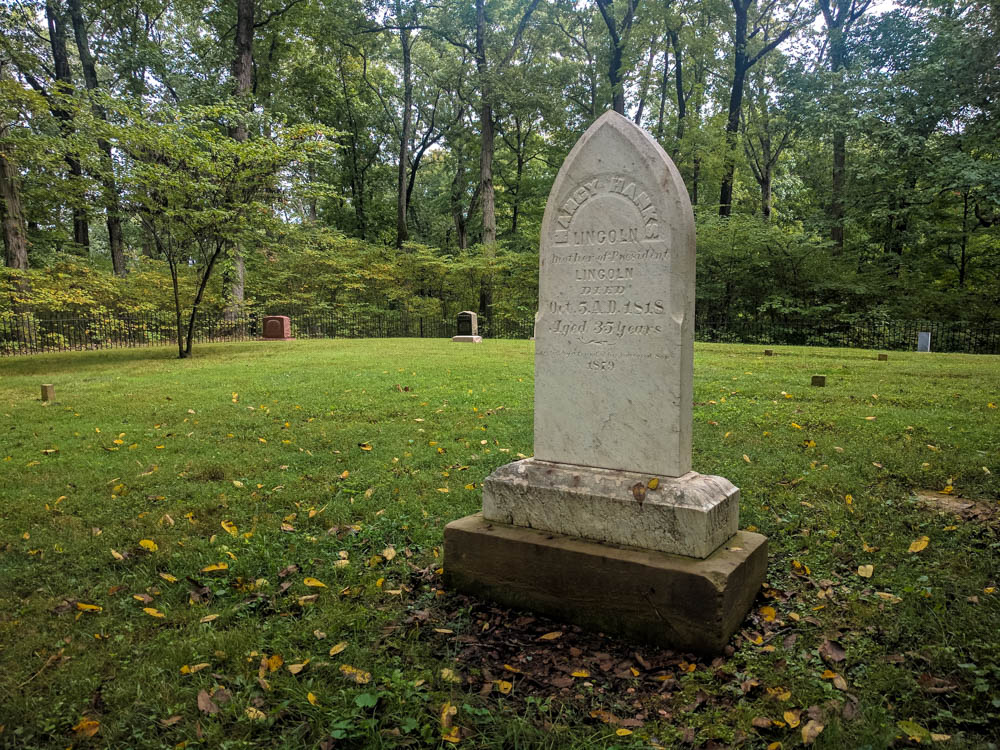
The Mother of Abraham Lincoln, Nancy Hanks Lincoln lies here
Cabin Site Memorial
In 1917 historians discovered the foundation of the third Lincoln cabin and officially marked it on April 28 of that year. The State of India then excavated the site in 1936 and found the remains of sill logs and a stone hearth. Following the excavation, state officials placed a bronze casting over the outline of the cabin’s foundation, then built a low protective stone wall around the monument.
The discovery of the Cabin Site spurred a local movement to create a National Memorial site, and by 1927 the Indiana Lincoln Union formed, raised funds, and lobbied support for a memorial. In 1932, the State of Indian established the adjacent Lincoln State Park to protect the area and preserve the historic homestead site. The Union continued to raise funds to make improvements through the 1940s, completing the Memorial Building in 1944. But it wasn’t until 1962, did the Indiana legislature approved the donation of another 114 acres to the district, did the Lincoln Boyhood site receive National status as a Memorial
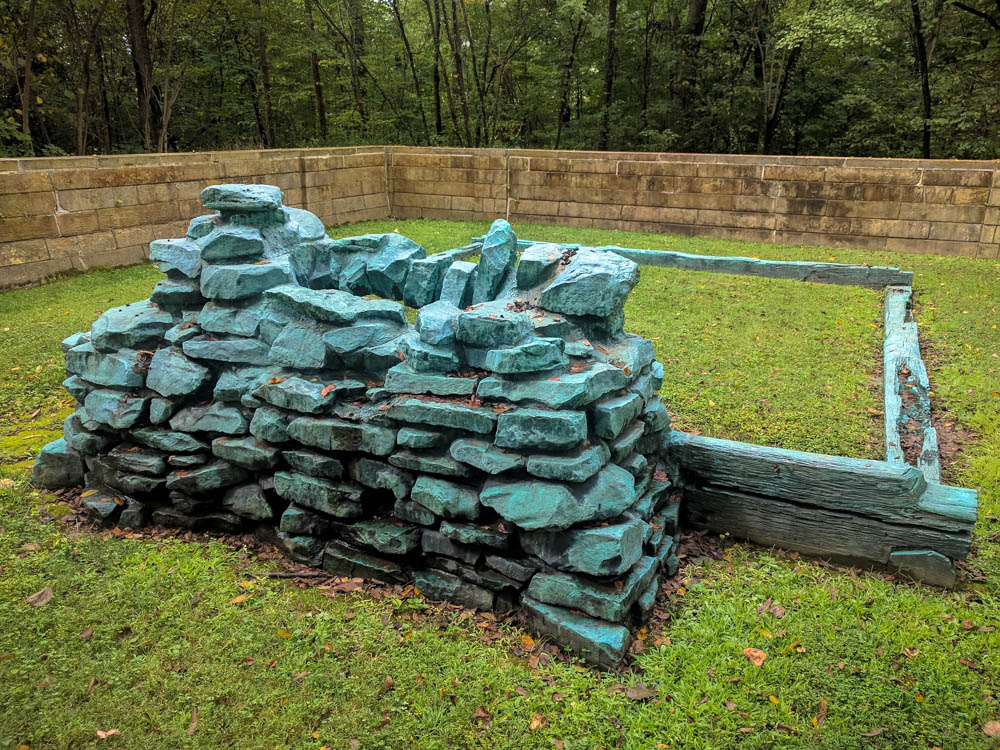
Cabin Memorial – the site of the third Lincoln Family Cabin
Lincoln Living Historical Farm
Just a few yards from the Cabin Site Memorial, the National Park Service established a Living History Farm. From mid-spring to early fall, volunteers help visitors to better understand the lives of Lincoln, his family, and neighbors during the frontier years. After “meticulous research” on the 1820s farm life, the National Park Service established this particular farm in 1968. When we visited, we found a modest single-room log cabin, a blacksmith shed, a garden lot, chicken coop, and a lean-too barn housing a single heritage cow. Several actors also mingled about, quick to teach any knowledge thirsty soul. A herd of sheep also inhabit the area, but their shyness prevented us from seeing them.

Lincoln Living History Cabin
Heritage Cows
I really enjoyed talking with the historical actors and learned about the many activities and items at the farm. Today, the volunteers also cultivate crops, raise livestock, all while using only period farm tools. One woman in period garb explained how their heritage cow was one of a hundred alive today descended from the 1820s stock. She (the cow) is a tri-purpose breed – good for milk, meat, and draft power. Unlike today’s cornfed and heavily medicated cows, these “heritage” cows are scrappy and flourish outside on unmanaged grasses. To this day, the heritage cattle resist disease naturally, birth offspring without human intervention, and produce milk well into their teen years. Sadly this beautifully sturdy breed is slowly going extinct.

Chapel within the Abraham Lincoln Boyhood Memorial Building
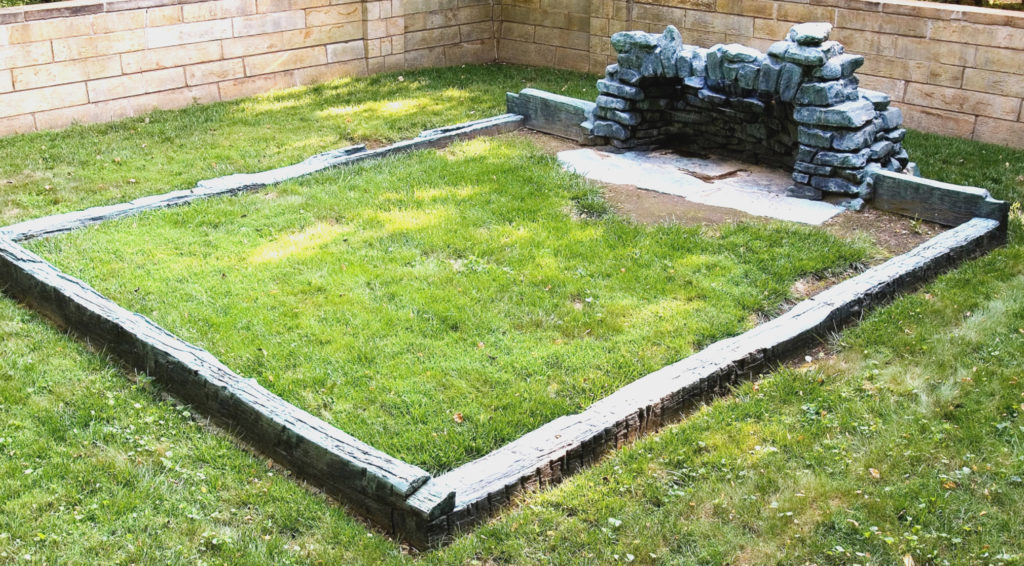
Cabin Memorial Enshrined in Bronze for All Eternity
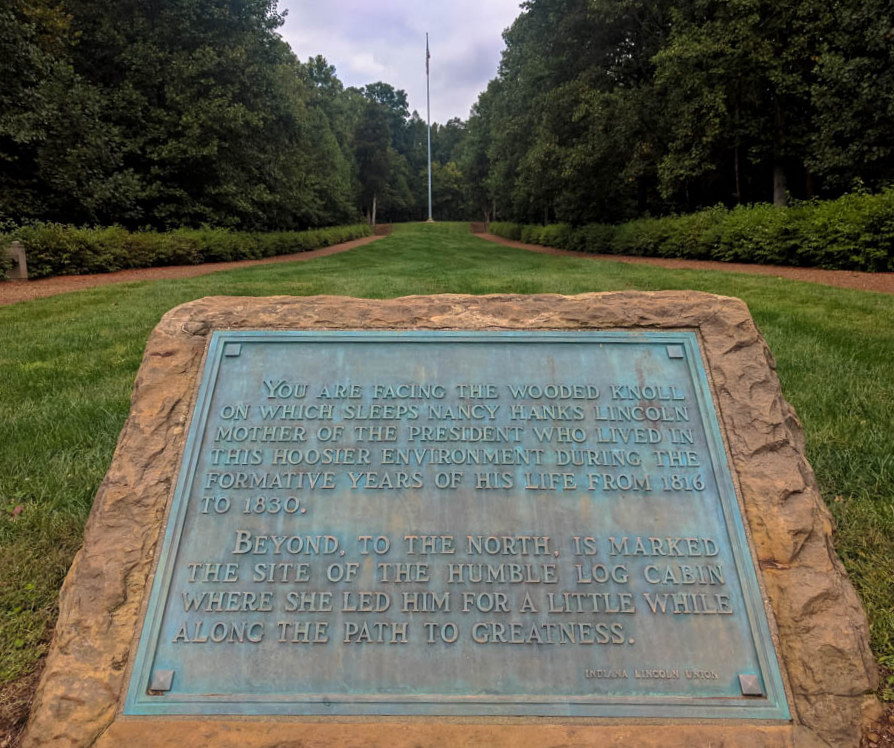
Memorial Courtyard and Plaque
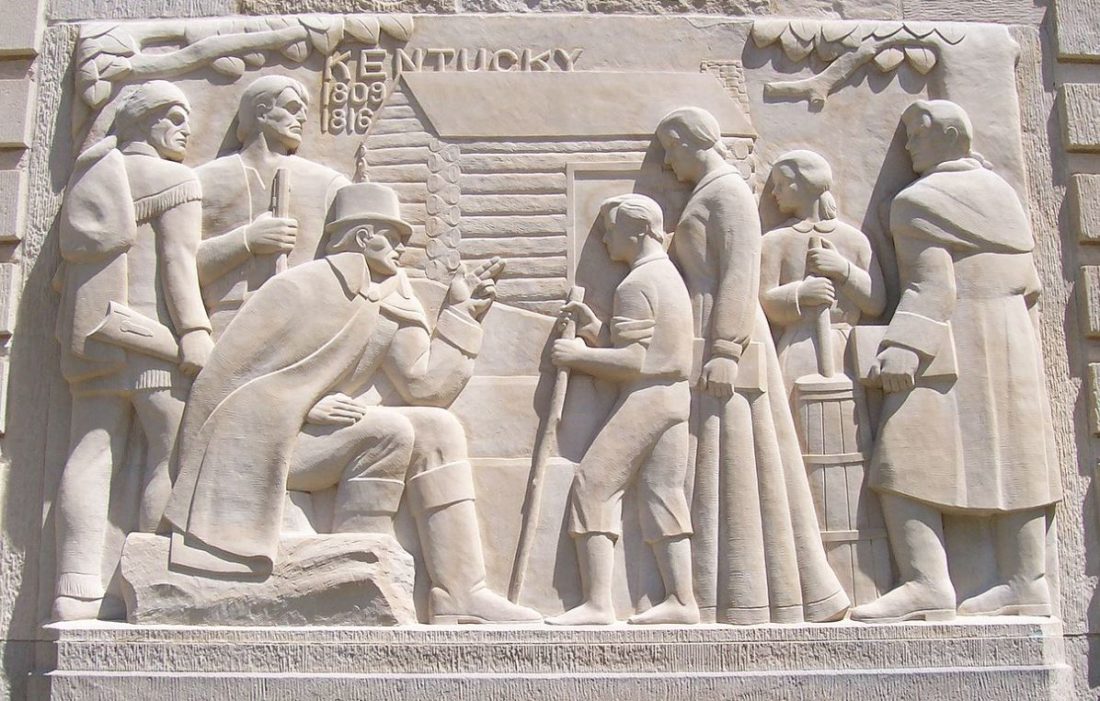
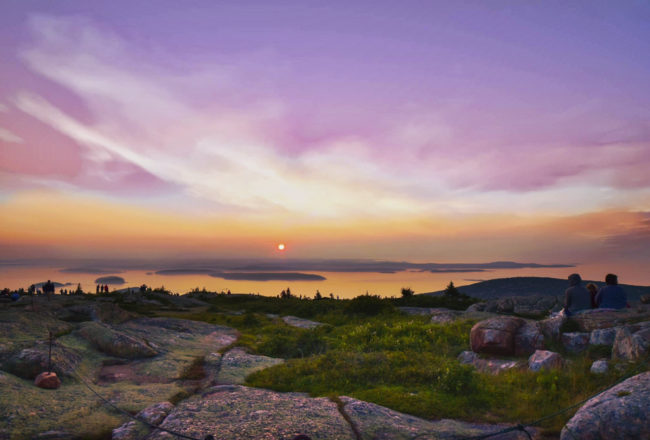
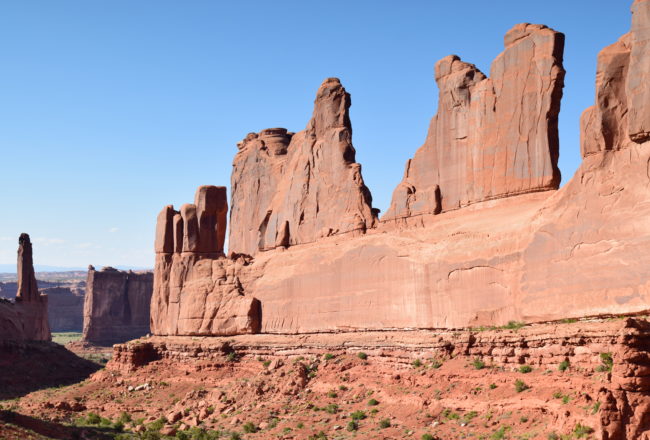
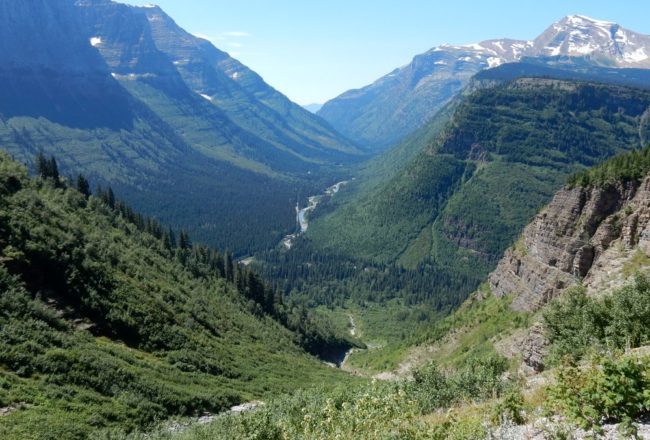


8 Comments
Thank you for the information ! This is giving me ideas of where we should travel and what to see this 2023 camping season! You’re writing is very articulate and inspires me to explore! 🙂
Safe and happy travels for 2023! I feel that the National Historic Parks of my birth state of Illinois and the neighboring states of Indiana and Kentucky were just the tip of the iceberg. And I often think about going back.
Very cool! They had some heritage breeds at George Washington’s Birthplace too, and it was really need to hear about the difference between those breeds and the ones more common today.
If I remember correctly, this cow was a one-year-old named Daisy. She was recently separated from her mom and had attached to the chickens in the neighboring coop as her new herd. She was adorable but a bit shy.
Hi Anne,
You might be interested in reading a book called Team of Rivals by Doris Kearns Goodwin. It is about Lincoln’s election to president, cabinet and the civil war period. Essentially a biographical portrait of Lincoln and some of the men who served in his cabinet from 1861 to 1865. I found it to be very interesting.
XOXO
Debra
Thanks for the book recommendation, Deb! I was able to find the unabridged audio version on Audible.com and added it to our “listen” list for our next long drive.
Hi Trail!
Laura and I camped at Lake Rudolph in June for a family event and a trip to Holiday World. After the family event, Laura and I continued to camp for few days and we took in the Lincoln Boyhood Memorial and the Lincoln Homestead. We loved it! In fact, we went back in September to camp at Lincoln State Park. Great area to explore. Love the Lincoln history.
Take care,
Dean
Thanks, Dean! I asked one of the volunteers at the Living History Farm, and they said they work-camp there every year and stay at the Lincoln State Park right across the street for the whole season in exchange. They said it was a fun way to enjoy retirement.